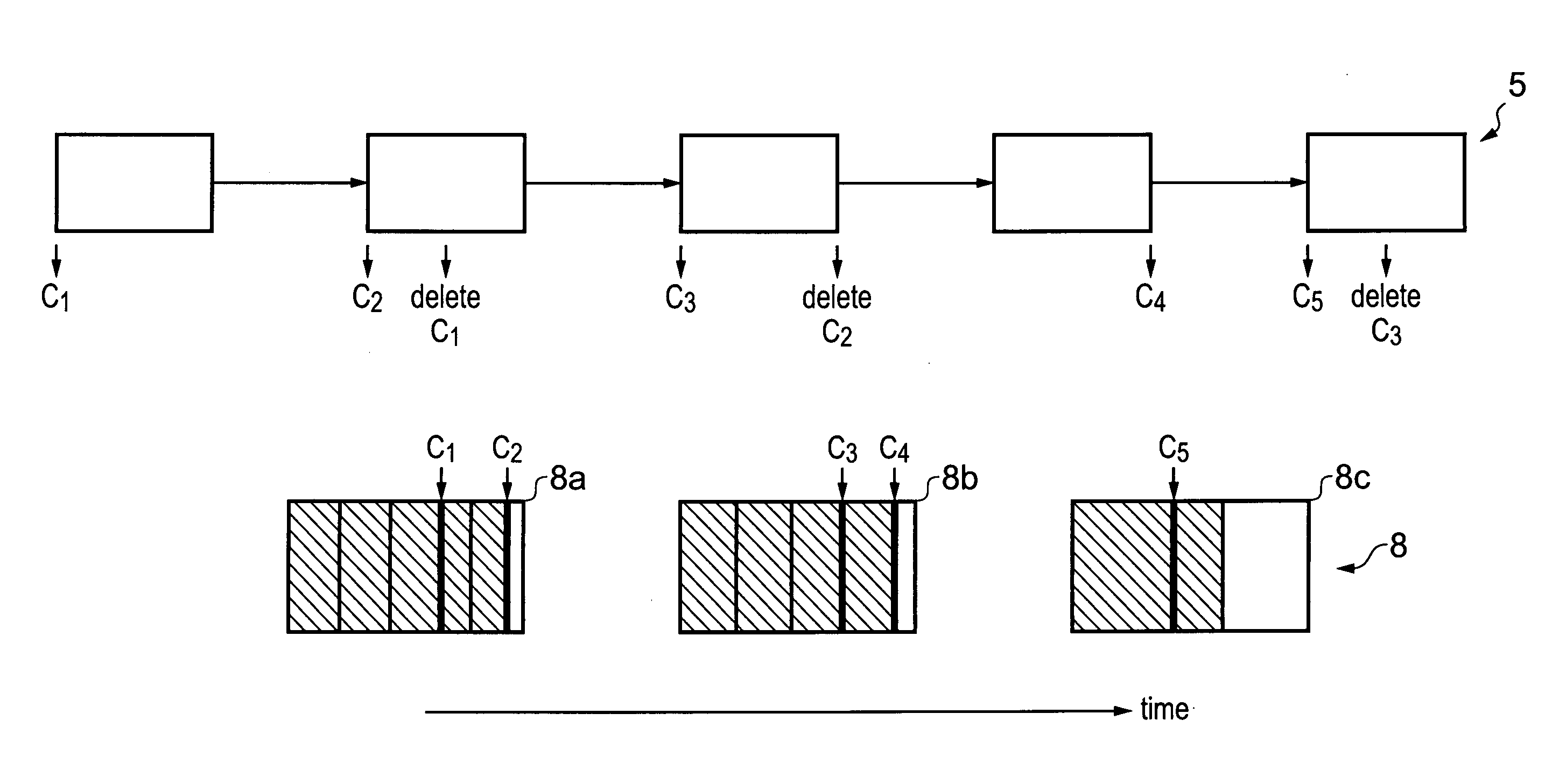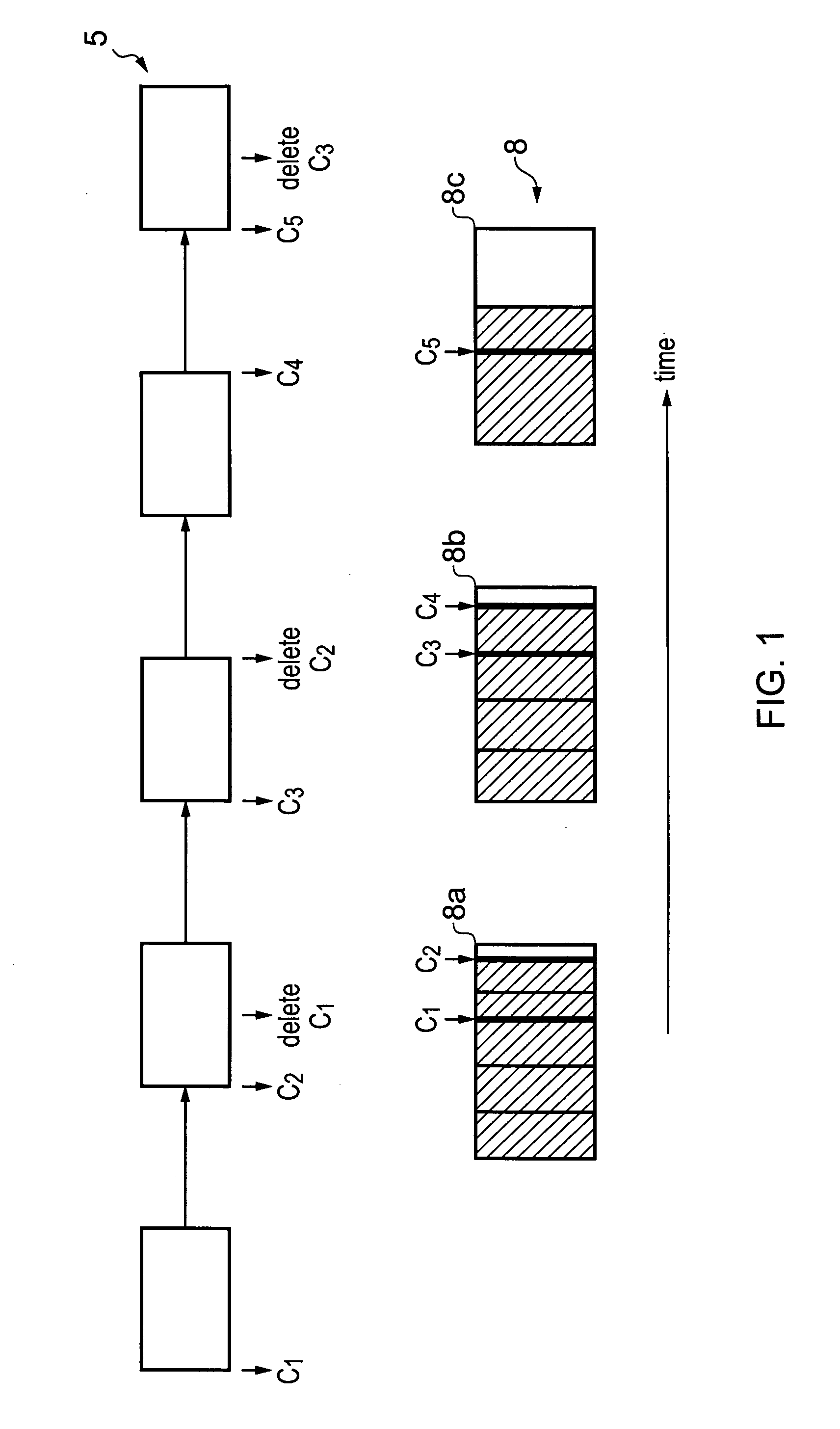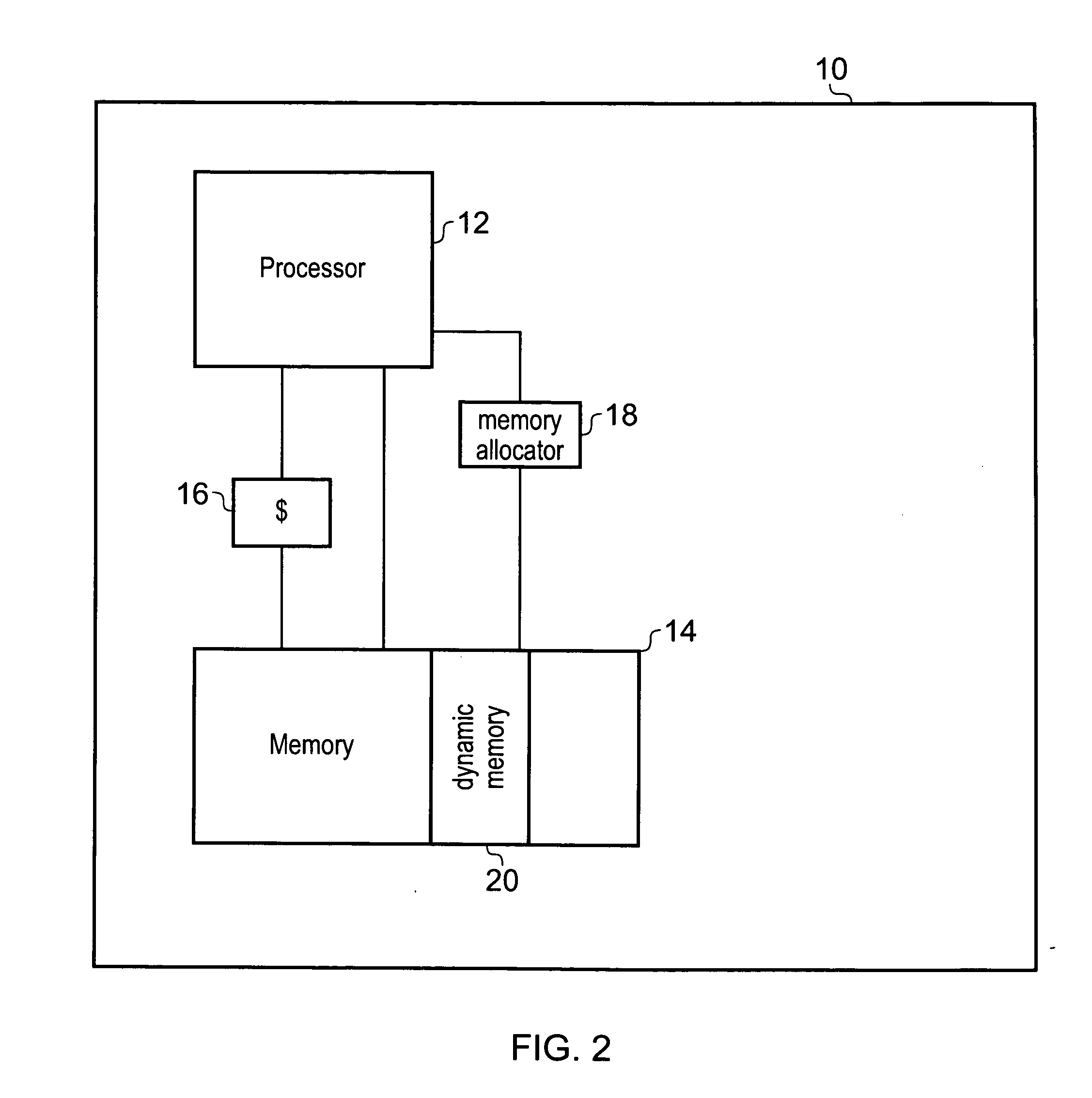Allocating and deallocating portions of memory
a technology of memory and allocation, applied in the field of data processing apparatus, can solve the problems of low burden on any software using the scheme, and achieve the effects of avoiding excessive memory consumption, reducing the total number of requests, and saving tim
- Summary
- Abstract
- Description
- Claims
- Application Information
AI Technical Summary
Benefits of technology
Problems solved by technology
Method used
Image
Examples
Embodiment Construction
[0038]FIG. 1 schematically shows how markers are used to delimit portions of memory that have been allocated. Thus, markers or pins are set as boundaries to regions that have been allocated for use by a process. In this example, portions of memory are allocated as the process executed by the processors requests them and these portions are shown in the Figure with the vertical lines. Thus, pipeline 5 processing a process or application allocates portions of memory within memory blocks 8 as it requires them at various points of execution. It then groups some portions together and sets markers or pins C1 to C5 to mark these grouped portions or regions. The portions that are combined to form regions are selected so that they store data with a similar lifetime, thus the data stored within a region will all go out of date at the same time. The portions of the blocks that are allocated to the process are shown hashed, while those currently not allocated to a particular process are shown no...
PUM
 Login to View More
Login to View More Abstract
Description
Claims
Application Information
 Login to View More
Login to View More - R&D
- Intellectual Property
- Life Sciences
- Materials
- Tech Scout
- Unparalleled Data Quality
- Higher Quality Content
- 60% Fewer Hallucinations
Browse by: Latest US Patents, China's latest patents, Technical Efficacy Thesaurus, Application Domain, Technology Topic, Popular Technical Reports.
© 2025 PatSnap. All rights reserved.Legal|Privacy policy|Modern Slavery Act Transparency Statement|Sitemap|About US| Contact US: help@patsnap.com



